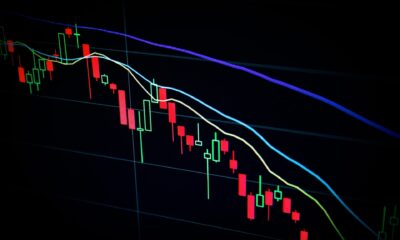Trading News
Swing Trading Or Day Trading – Which Way to Go?

Day trading or rapid buying and selling of securities is one of the most lucrative investment strategies. It requires quick decisions and the ability to make instant decisions under stressful conditions. There is a high-risk factor involved, but the profit potential is also great. This article will explain some of the dynamics of this investment style and help you understand how to choose the right stocks and short sellers. Read ahead, and you can learn more about this trading style.
The term ‘day trading’ refers to selling all stocks, bonds, futures, and currencies by the end of one trading day. Day trading is often characterized by high gains and large losses, as well as frequent changes in expectations among day traders. Day traders usually incur small gains or losses during the course of a day, with larger sums increasing and decreasing throughout the trading day. Day trading is sometimes utilized by institutional traders as well. These institutional investors typically have higher per-share profits and larger capital amounts than individual traders.
Unlike other investment strategies, day trading is very risky. It is characterized by high percentage rates of losses and small gains. The high risks inherent in this strategy make it highly risky for the inexperienced and those who do not possess a lot of experience. Many day traders report earning negative profits from their trades, which makes day trading more of a gamble than a sensible investment option. It is important to understand that although the risk may seem unreasonable, it is important to consider the number of gains that can be expected in a given day.
The common method of day trading involves buying stocks that are expected to lose in value, then selling them again in the hope of earning profits. This is also referred to as “put and take” strategy since all gains and losses are realized through sales. While this strategy has many advantages and provides substantial profits for day traders, some disadvantages need to be considered before purchasing stocks. One of the main disadvantages of day trading stocks is that there is no opportunity to test out and develop trading skills, so day traders often lose money if they are not able to determine what stocks to purchase and sell.
Another disadvantage is that there is generally no leverage available when trading stocks. Since the trades are done without recourse to cash, a trader cannot expect to increase his or her profits by borrowing stock to place in a position. Also, because there is no margin account, a day trader cannot expect significant profits. Since the trades are conducted almost completely on paper, there is no chance for the trader to learn about the underlying assets’ performance, market trends, or market values. Because of these disadvantages, day trading stocks is generally not a good choice for new traders or people who have no experience in trading stocks.
To improve your chances of success in day trading, it is important to first become a professional trader before you choose to become involved in this type of trading. Swing traders and other professionals who have experience in buying and selling stocks can help you increase your chances of making more profits. These professionals will also help you find stocks that you can get a good price and also tips that you can use to make more accurate trades.





















